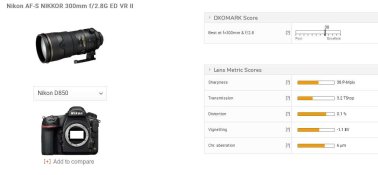Instead post your lp/mm tests and evaluation methods,
I have done exactly that here on photrio several times, for years. If you have missed or ignored that, than it is your fault, not mine.
You could also have a look into the film photography print magazine 'PhotoKlassik" - edition IV.2016 - in which I have described my tests methods in even greater detail. And have published my resolution test results of
64 (!!) different film types. And test comparisons to digital sensors. And test comparisons of different imaging chains.
That edition can still be ordered via the PhotoKlassik webpage, by the way.
To quote you:
"Lenses are only to resolve 17 to 25 effective MP"
So, what you are saying by this is that:
1. All film manufacturers, which have offered higher resolution films like Kodak Technical Pan, Agfa Ortho, Agfa Copex Rapid, ADOX CMS 20 I/II, Agfa APX 25, Kodak Panatomic X, Kodak T-Max 100, T-Max 400, Ilford PanF+, Ilford Delta 100, Neopan Acros I/II, ADOX HR-50 / Scala 50, Kodachrome 25 / 64, Velvia 50 / 100, Provia 100F, Sensia 100 III, Astia 100F, Provia 400X, E100, E100G, Portra 160, all Superias and some more.......,
are idiots, because they have invested dozens of millions of R&D over the years in films which are useless because the lenses cannot use at all their resolution potential. Exactly that would be the consequence of your statement.
Of course the film manufacturers are not such idiots, because they have done thousands of tests and documented that the lens resolution is huge and often only limited by physical diffraction. Therefore you can get system resolution (film+lens) of much much more than 25 MP (85 lp/mm) with all the above mentioned films from low-medium object contrast on.
2. All current digital camera manufacturers are idiots, because they offer 30MP, 36MP, 42MP, 45MP and 60MP 35mm sensor-size digital cameras. But all that is useless, as the lenses cannot resolve these megapixels at all. That is what you have said by your claim.
Well, the manufacturers will not only contradict you, they will also easily show you that you are totally wrong.
3. There are millions of photographers out there using these above mentioned cameras with much more than 25MP. You say they are idiots, because they cannot use that resolution at all because the lenses lack the needed performance.
Well, these photographers will also contradict you, because they have experienced in their daily photography life that they can get indeed higher resolution with these cameras compared to their former 12, 16 or 24 MP cameras.
As all the film, lens and camera manufacturers are contradicting you, as well as million of photographers, you should at least think about the possibility that you may be wrong.........
And here an excellent test report by our member Tim Parkin, who publishes the online photo magazin 'onlandscape', and is also running a professional drumscan service:
https://www.onlandscape.co.uk/2014/12/36-megapixels-vs-6x7-velvia/
Another very well reputed and reliable source that give evidence that your claims here are completely wrong and have nothing to do with reality.
Regards,
Henning









 .
.
